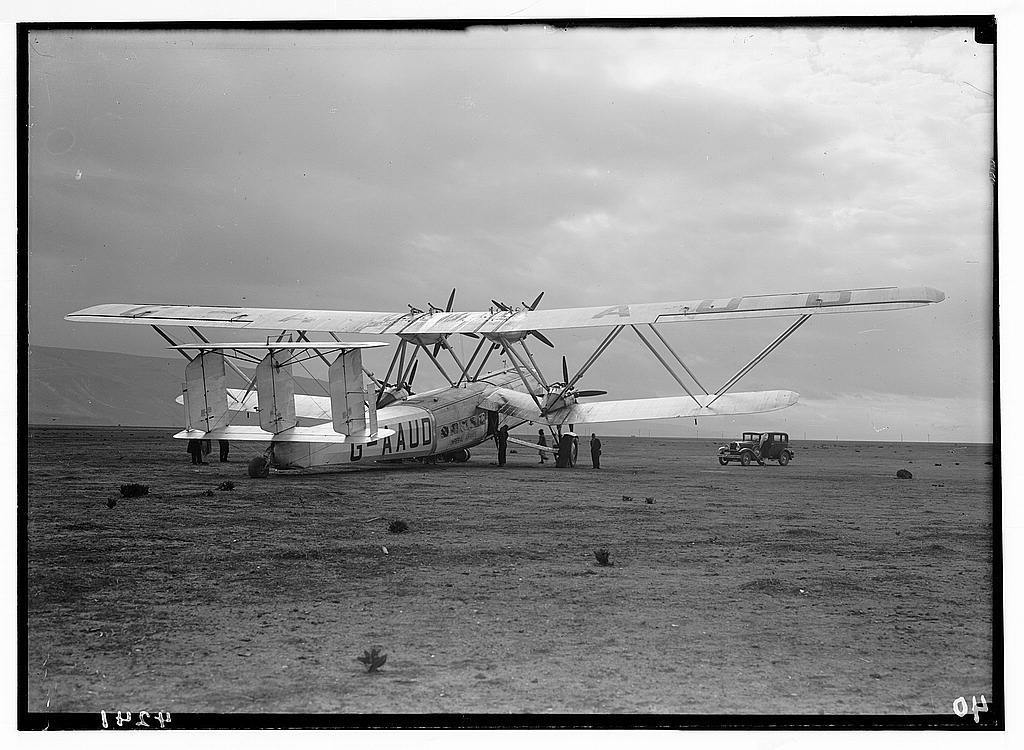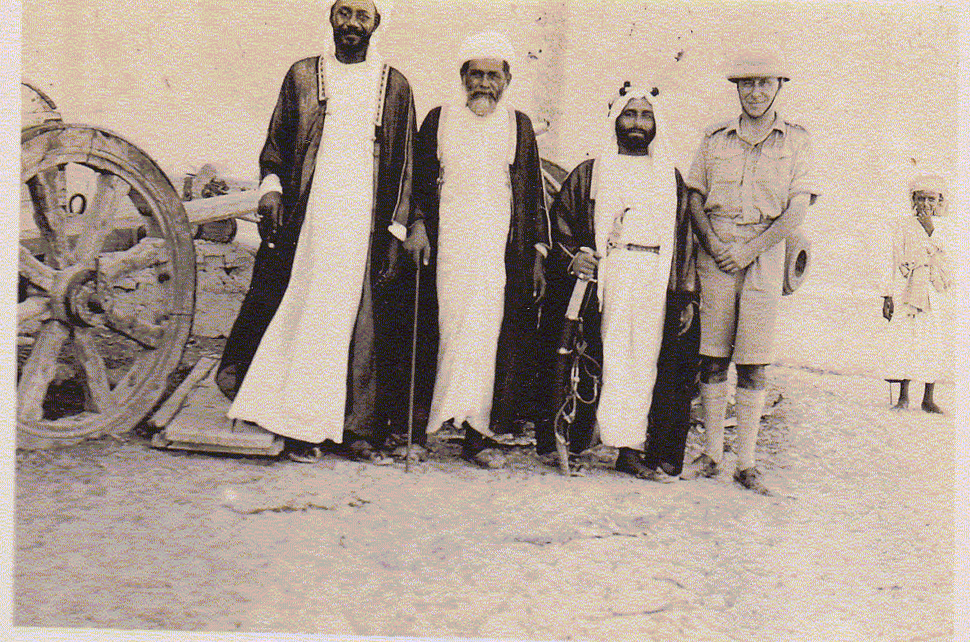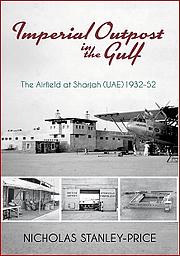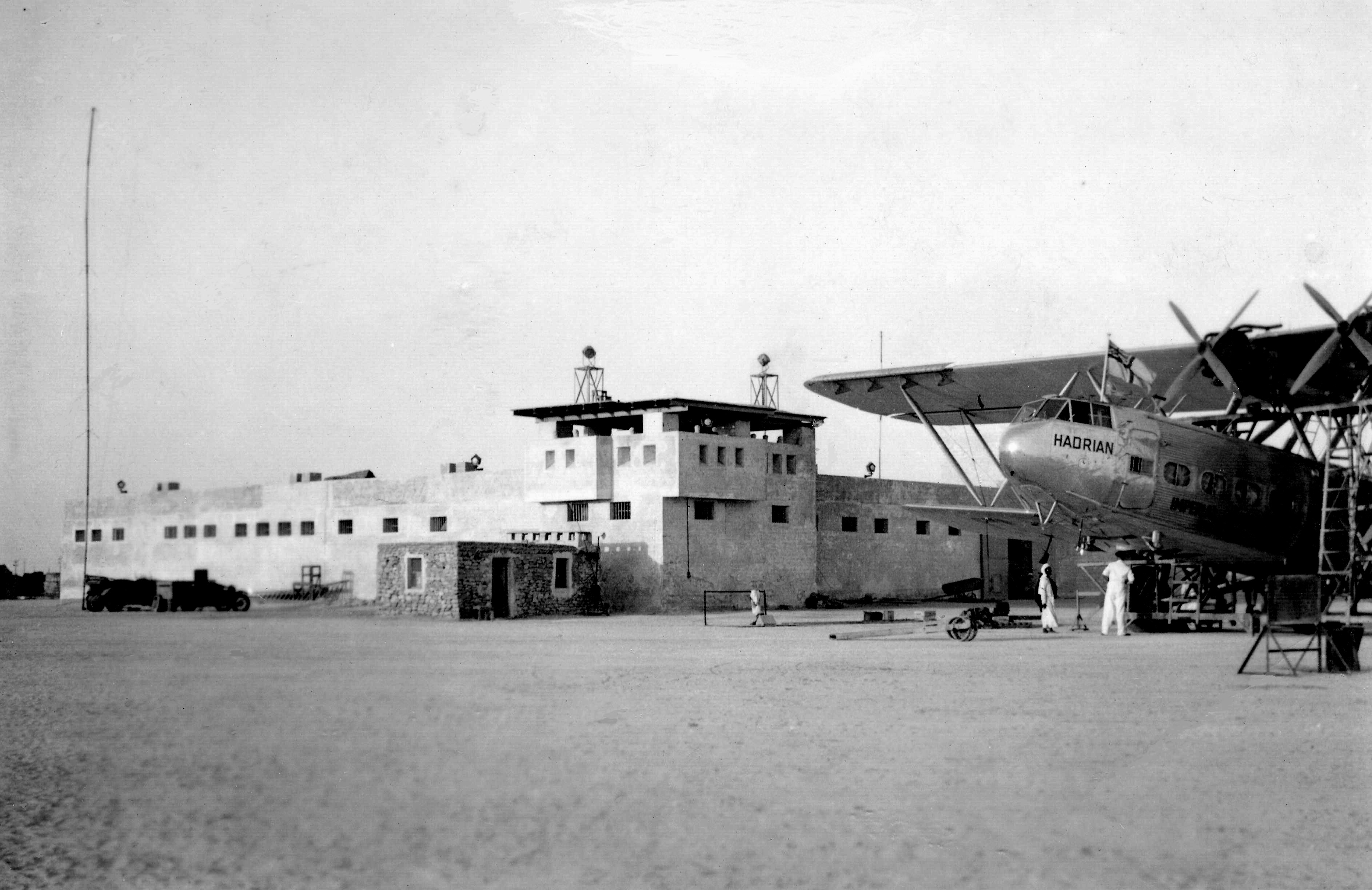After having reviewed ‘History in the Arab Skies’ by Gerald Butt, quite by chance I came across this little gem of a book about Sharjah airfield, close to Dubai in the United Arab Emirates (UAE). Its author, Nicholas Stanley-Price, was the cultural heritage advisor to the Sharjah Museums Department in the UAE fro m 2007 to 2008. Interesting that aviation in the Middle East has been so in vogue these last years. Well, I suppose it is obvious given the emerging airlines in the region.
m 2007 to 2008. Interesting that aviation in the Middle East has been so in vogue these last years. Well, I suppose it is obvious given the emerging airlines in the region.
The book deals chronicles the development of the airport between 1932 and
1952. The author describes in detail how Sharjah airfield was built close to the sea just to the north-east of Dubai. When you read this book, you are filled with the desire to go back in time and, together with the English, discover this piece of land and render it fit for an airfield. Why was it so important to build an airfield on that spot? Simple: the British company, Imperial Airways, needed an airfield to break the long-haul journey to Basrah (Iraq) and to Karachi (Pakistan). This hop was part of the much longer route from London to the Far East where Great Britain had important imperial interests in India, Pakistan and Afganistan. Imperial Airways would have preferred to found an airfield in Iran as that would have made the journey quicker, but, at the time, the Iranians were most reluctant to allow the British to have a base on their soil.
The book contains lots of b/w photos which conjure up a romantic atmosphere. However, I doubt it was really that romantic. The heat was unbearable and it was a struggle just coping with providing the basics – water, food, petrol/kerosene – not to mention the intermittent tension between the Bedouin and the ‘Rest House’ residents. This Rest House, built on the airfield, was essentially a fort, and quickly became the hub of the airport. Nicholas Stanley-Price describes in great det
petrol/kerosene – not to mention the intermittent tension between the Bedouin and the ‘Rest House’ residents. This Rest House, built on the airfield, was essentially a fort, and quickly became the hub of the airport. Nicholas Stanley-Price describes in great det ail how the Rest House came to be built, why it was designed in the way it was, what was later built to either side of it, and its central role in the lives of passengers, crews, the British soldiers who were stationed there, and the local guards whose job it was to protect the aircraft.
ail how the Rest House came to be built, why it was designed in the way it was, what was later built to either side of it, and its central role in the lives of passengers, crews, the British soldiers who were stationed there, and the local guards whose job it was to protect the aircraft.
Stanley-Price leaves no stone unturned in his story of Sharjah. From the Rest House construction blue prints to the airplanes which landed at the airfield, from the meals provided to the air conditioning systems, and from the settlement contract from 1932 to the seaplanes which, unfortunately, could not be accommodated at Sharjah because the sea there turned out to be unsuitable for them. He does this in depth and with precision. His eye for interesting details holds the reader’s attention. Of course you have to want to read a history of the airport in the first place… “Go for it!” I say. The accompanying photos are excellent and, because they are interspersed with the prose throughout, they make the book extra attractive to read. Personally, I found the story of the search for suitable land and how the contract between the British and the local Sultan was drawn up the most fascinating part.
Photos posted with permission of the author.













Leave a Reply